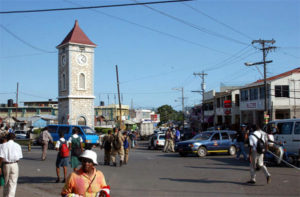Clarendon: Where One Of the Earliest Slave Rebellions Took Place
The Parish of Clarendon is Jamaica’s third largest parish in size behind St. Catherine and St. Ann, covering approximately 1,196 square kilometers.
It is located on the southern half of the island and is bordered to the north by St. Ann, to the east by St. Catherine, to the west by Manchester and to the south by the Caribbean Sea.
The southern plains of the parish were first occupied by the Tainos, and afterwards by the Spaniards who established cattle ranches, referred to as ‘hatos’ or ‘haciendas.’
Clarendon’s development started in the seventeenth century from land grants issued by Charles II to former Commonwealth troops who had established sugar estates along the Rio Minho Valley.
This area is considered the first place of settlement by the English in Clarendon. The names of these early settlers still remain as many places along the valley bear their names, including; Ballard, Sutton and Pennant.
In 1690, the first major slave rebellion staged in Jamaica occurred in Clarendon at Sutton’s Plantation. The runaways burnt the land and the Great House as it was weakly defended. Many of the runaways were later killed or recaptured; others joined the Maroons in the north of the parish. They continued over different points attacking different plantations and burning them.

The government in response sent out soldiers to the hills to try to overcome them. The soldiers gained some level of success as the Maroons, who were led by Cudjoe; were gradually driven out from the Cave River Valley, first to the area around Ulster Spring and then into the Cockpit Country. Subsequently, the Maroons really had nothing more to do with the parish of Clarendon.
May Pen is the capital of Clarendon and is said to have begun with two inns. It was once part of an estate named after its owner; Reverend William May who was born in England in 1695 but in his later years resided in Jamaica. He was rector of the Kingston Parish Church but was later transferred to Clarendon, where he served for thirty two years.
In earlier years, travelling to May Pen was a tedious task as travelers going from east to west had to lodge at the inns when Rio Minho was in spate (no bridge at that time). It is said that many well known members of the public drowned in an attempt to cross the river. A bridge was eventually constructed. As time went by, houses were erected and the village became the town of May Pen.
By Neo Makeba
Download The Jamaican Blogs™ App for your Android device: HERE
Remember to share this article on Facebook and other Social Media Platforms. To submit your own articles or to advertise with us please send us an EMAIL at: [email protected]

